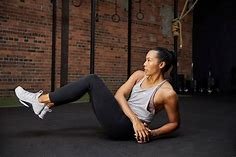When it comes to exercise techniques and workouts, the right approach depends on your fitness goals (strength, endurance, flexibility, etc.) and your experience level.

1. Exercise Techniques
- Form:
- Proper form is crucial to avoid injury and maximize effectiveness. Always focus on maintaining correct posture and alignment.
- For example, when doing a squat, your knees should track over your toes, and your chest should remain upright. Never let your knees collapse inward.
- Breathing:
- Proper breathing helps maintain stamina and supports performance. Typically, exhale during the exertion phase (lifting, pushing, pulling), and inhale as you return to the starting position.
- Progressive Overload:
- To continue making progress, you need to gradually increase the intensity of your workouts. This can mean increasing the weight you lift, the number of repetitions, or the duration of a cardio workout.
- Mind-Muscle Connection:
- Focus on the muscle you’re working during an exercise to optimize activation. For instance, when doing bicep curls, concentrate on feeling the contraction in your biceps.
2. Types of Workouts
Strength Training
Strength training exercises help build muscle mass, increase strength, and improve overall body composition. These workouts usually involve resistance through weights, bodyweight, or machines.
- Types of Strength Training:
- Free Weights: Dumbbells, barbells, kettlebells (e.g., squats, deadlifts, bench presses).
- Bodyweight: Push-ups, squats, lunges, planks.
- Machines: Leg press, lat pull-down, chest press.
- Sample Workout (Full Body):
- Squats (3 sets of 8-12 reps)
- Bench press (3 sets of 8-12 reps)
- Deadlifts (3 sets of 8-10 reps)
- Pull-ups (3 sets of as many reps as possible)
- Planks (3 sets of 30-60 seconds)
Cardio Workouts
Cardiovascular exercises improve heart health, endurance, and burn calories. These workouts increase your heart rate and can be done through different activities.
- Types of Cardio:
- Steady-State Cardio: Running, cycling, swimming, or walking at a consistent pace.
- HIIT (High-Intensity Interval Training): Alternating between short bursts of high-intensity effort and lower-intensity recovery periods (e.g., sprints for 30 seconds, then walking for 30 seconds).
- Circuit Training: A mix of strength and cardio where you move through a series of exercises with little rest in between.
- Sample Workout (HIIT):
- 30 seconds of jumping jacks, followed by 30 seconds of rest.
- 30 seconds of burpees, followed by 30 seconds of rest.
- 30 seconds of high knees, followed by 30 seconds of rest.
- Repeat for 4-6 rounds.
Flexibility and Mobility Workouts
These exercises improve range of motion, flexibility, and joint health. They are essential for recovery and to prevent injury.
- Types of Flexibility & Mobility Workouts:
- Yoga: A practice that combines flexibility, balance, and breathing exercises (e.g., downward dog, pigeon pose).
- Stretching: Incorporating both dynamic and static stretches into your routine (e.g., hamstring stretch, shoulder stretches).
- Foam Rolling: Self-myofascial release technique that targets muscle knots to improve flexibility and reduce soreness.
- Sample Routine (Yoga Flow):
- Start with cat-cow stretches to warm up the spine.
- Move into sun salutations to engage the whole body.
- Transition into hip openers (e.g., pigeon pose).
- Finish with deep stretching (e.g., seated forward bend, child’s pose).
Endurance Training
Endurance workouts are designed to improve stamina and the ability to perform activities for extended periods.
- Types of Endurance Workouts:
- Long-distance Running: Building up the time or distance you can run.
- Cycling: Riding for extended periods at a moderate pace.
- Rowing: Long-duration rowing at a steady pace.
- Sample Workout (Endurance Running):
- Warm up with 5-10 minutes of light jogging.
- Run at a steady pace for 30-60 minutes.
- Cool down with light jogging or walking.
Functional Training
Functional training involves exercises that mimic everyday movements and improve your ability to perform day-to-day tasks. These workouts often use compound movements and engage multiple muscle groups.
- Types of Functional Training Exercises:
- Kettlebell Swings: A full-body exercise that strengthens the hips, glutes, and core.
- Farmer’s Walk: Carrying weights in each hand for distance or time to improve grip strength and posture.
- Medicine Ball Slams: A full-body explosive movement.
- Sample Workout (Functional Training):
- Kettlebell swings (3 sets of 12-15 reps)
- Medicine ball slams (3 sets of 12 reps)
- Walking lunges (3 sets of 20 steps)
- Farmer’s walk (3 rounds for 30 seconds)
3. Tips for a Balanced Workout Routine
- Consistency is Key: Whether you’re lifting weights, running, or practicing yoga, consistency over time is what leads to progress.
- Recovery: Make sure to allow muscles time to recover with rest days or active recovery (light walking or yoga).
- Nutrition: Eating the right foods for your goals (e.g., protein for muscle growth or carbohydrates for energy) is essential for maximizing workout results.
- Variety: Mix up your routine to prevent plateaus and keep things interesting. Incorporate different types of exercise throughout the week.
Sample Weekly Workout Schedule
- Monday: Strength training (upper body)
- Tuesday: Cardio (steady-state or HIIT)
- Wednesday: Active recovery (yoga or stretching)
- Thursday: Strength training (lower body)
- Friday: Endurance training (long-distance run or cycling)
- Saturday: Functional training (kettlebell circuit or bodyweight exercises)
- Sunday: Rest or light activity
